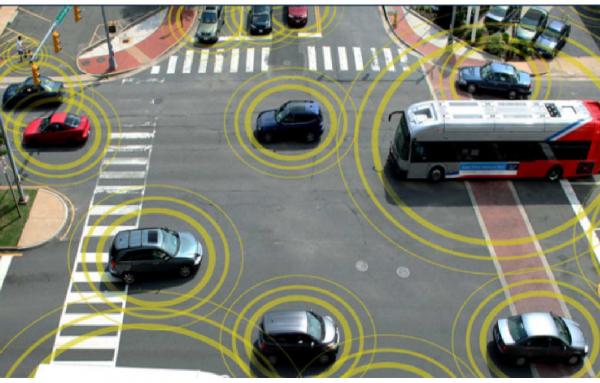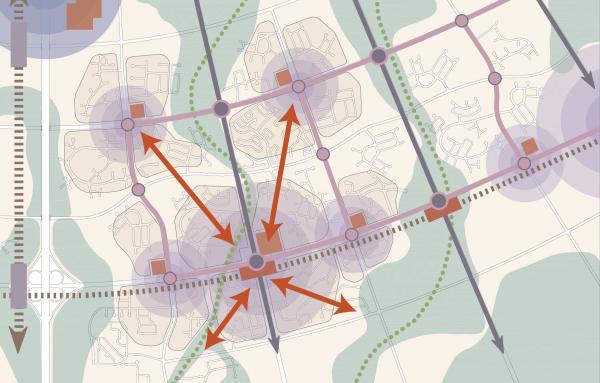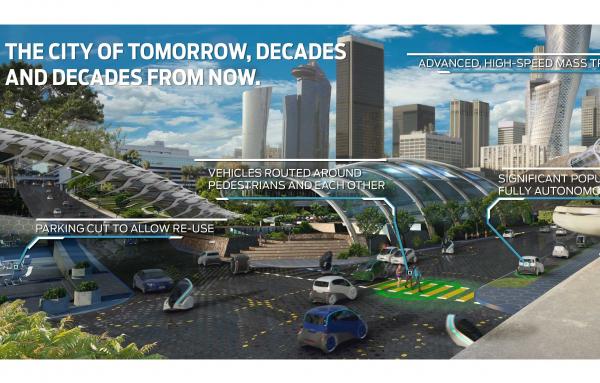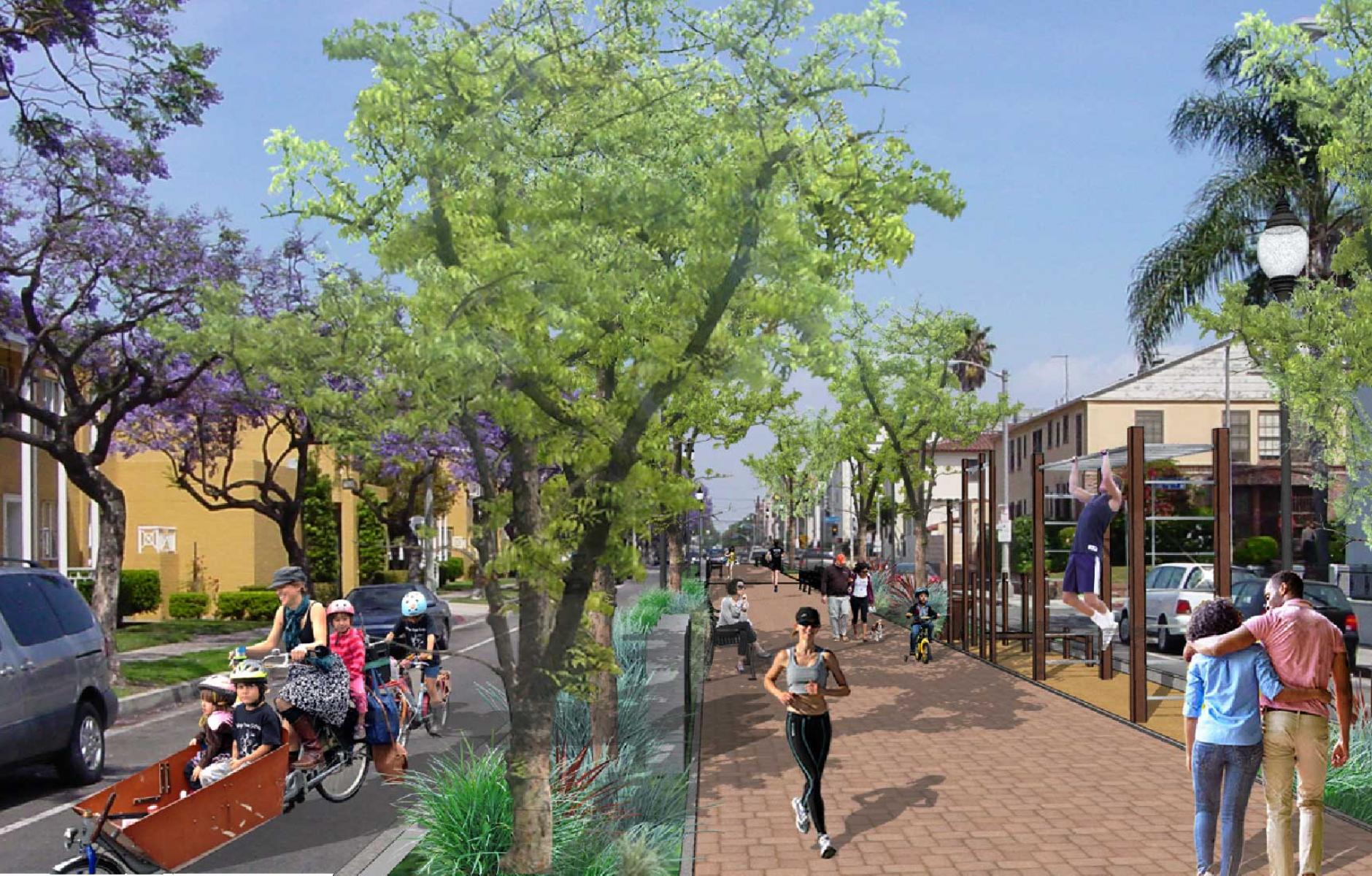
Street design implications of autonomous vehicles
Autonomous vehicles (AVs) will likely be one of the most transformative and disruptive technologies ever introduced. The technology brings the potential to make great progress in the following areas:
- Providing greater access
- Addressing transportation equity issues
- Reducing greenhouse gases (GHGs)
- Reducing congestion and travel time
- Reducing the cost of travel
- Creating public space
- Improving safety
- Making our communities healthier and more livable.
At the same time, AV technology could also exacerbate congestion, cause suburbs to sprawl farther out, increase GHGs, exacerbate inequities, and make communities less livable. Which of these seemingly contradictory outcomes comes to pass will depend on public policies that are put into place. With so much at stake, we need to prepare for this future.
Issues surrounding AV technology transcend many facets of society. They will impact not just transportation, but also land use planning, economic welfare, health, livability, environmental sustainability, as well as other realms. This paper focuses on how AVs will affect street design.
AVs will likely impact street design in at least the following ways:
- Street cross-sections and public space
- Infrastructure
- Adjacent land uses
- Curb management.
This paper will examine each of these.
Street cross-sections and public space
AVs offer the possibility of freeing up a significant amount of space for higher and better public uses by reducing the number of travel lanes, reducing the amount of on-street parking, reducing the widths of some travel lanes and with bi-directional lanes.
Road diets
Research shows that when all vehicles are fully automated, capacity on freeways will roughly double.1 While we may not expect the exact same results on surface streets, the concept applies. This leaves open the possibility to design many more “road diets,” where we can reduce the number of travel lanes for vehicles and use the space for other purposes. Typically, transportation planners use 20,000 vehicles per day (Average daily traffic – ADT) as a threshold for taking a four-lane street down to two lanes, usually with a center-turn lane. At this volume, two lanes provide sufficient capacity. Four lanes provide enough capacity for up to around 40,000 ADT. This is approximately the threshold for reducing six-lane streets to four. Of course, new urbanists are willing to push these numbers higher to design road diets, making the case that the trade-off is worth it. Since AVs will safely space themselves much closer together than human driven vehicles, and can even “connect” and form platoons, they won’t likely need the same number of lanes that human-driven vehicles do. The threshold for designing road diets by taking four-lane streets down to two-lane streets without impacting capacity may jump to 35,000 or 40,000 ADT. Similarly, the threshold for taking six-lane streets down to four lanes, may rise to 50,000 or 60,000 ADT. Many of our streets could become candidates for road diets.
Moreover, many AV enthusiasts believe and hope that AVs will bring attractive opportunities for most people to give up private ownership of autos in favor of Transportation as a Service (TaaS). They also promote the idea of trips to be shared as much as possible, like Uber Pool and Lyft Line, or in public buses. With pricing, time advantages, and locational advantages for shared rides, maximizing sharing is central to realizing many of the potential AV benefits. One of those benefits could be reducing the number of vehicles on our streets, further opening opportunities for road diets.
Reducing the amount of on-street parking
Driverless options offered by Lyft, Uber and many others will become significantly more economical than owning a car. On average, our cars are parked 95 percent of the time, so they are only in use 5 percent of the time.2 With TaaS vehicles running on-demand 24 hours per day, their utilization rates will be much higher. RethinkX projects that TaaS vehicles might operate 40 percent of the time.3 As people give up car ownership for TaaS, much less parking will be needed. While the demand for on-street curb pick-up and drop-off will grow significantly, on-street parking can be eliminated in many places, freeing up this space for other public uses.
Reducing lane widths
As AVs will be better able to stay in lanes, those without full-size passenger buses or trucks could be reduced to 8 or 9 feet in width. This allows us to capture more space for repurposing. These lanes are also more pedestrian friendly, as they are easier to cross.
Bi-directional lanes
Some residential streets and those with low traffic volumes may use lanes that enable cars to travel in either direction as needed. One of the key features of AVs will be Vehicle-to-vehicle (V2V) communication so that vehicles will talk to each other and coordinate movements. Today we use bi-directional center-turn lanes that could be used as bi-directional travel lanes. Narrow, low-volume “yield” streets also have bi-directional lanes currently. This concept opens up more possibilities for yet more road diets and narrow, pedestrian-friendly side-streets.
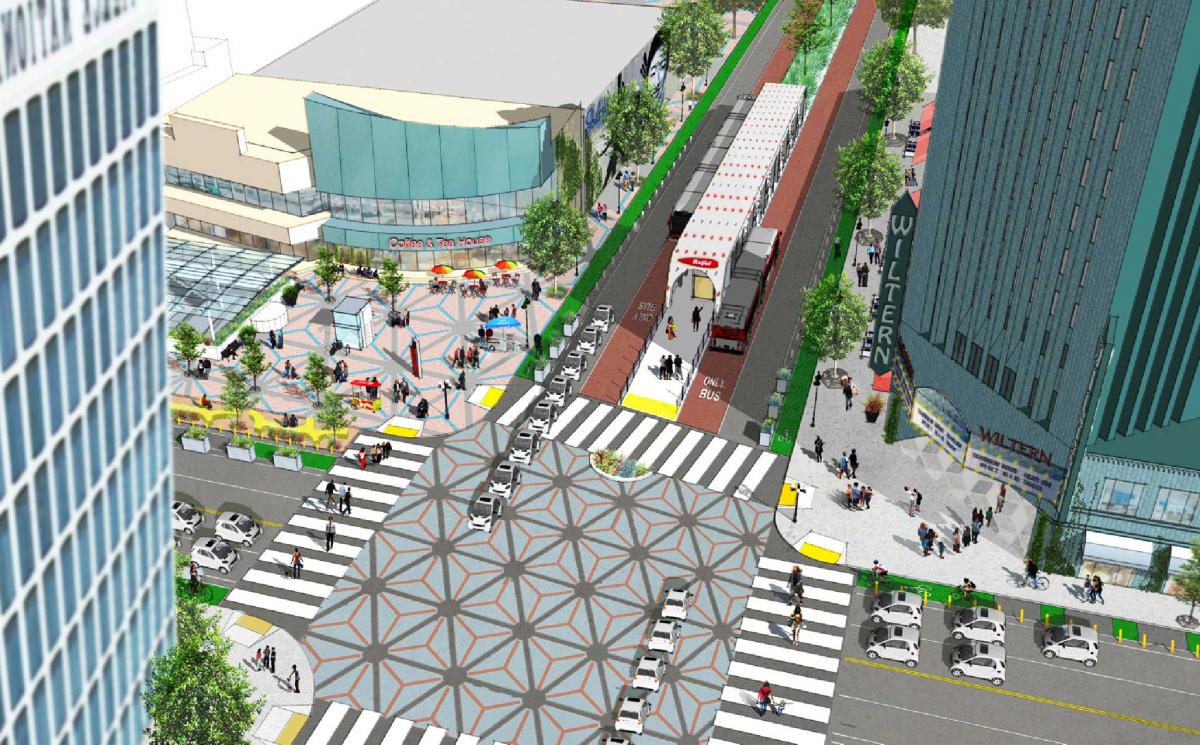
All of these provide the opportunity for cities to use a significant amount of public space for repurposing to higher and better uses. On major city streets this space might be used for:
- Bus lanes
- Protected or improved bike lanes
- Wider sidewalks
- Street furniture
- Street vending
- Public art
- Fountains
- Streetscape and landscape
- Outdoor dining
- Jogging paths
- Playgrounds
- Other
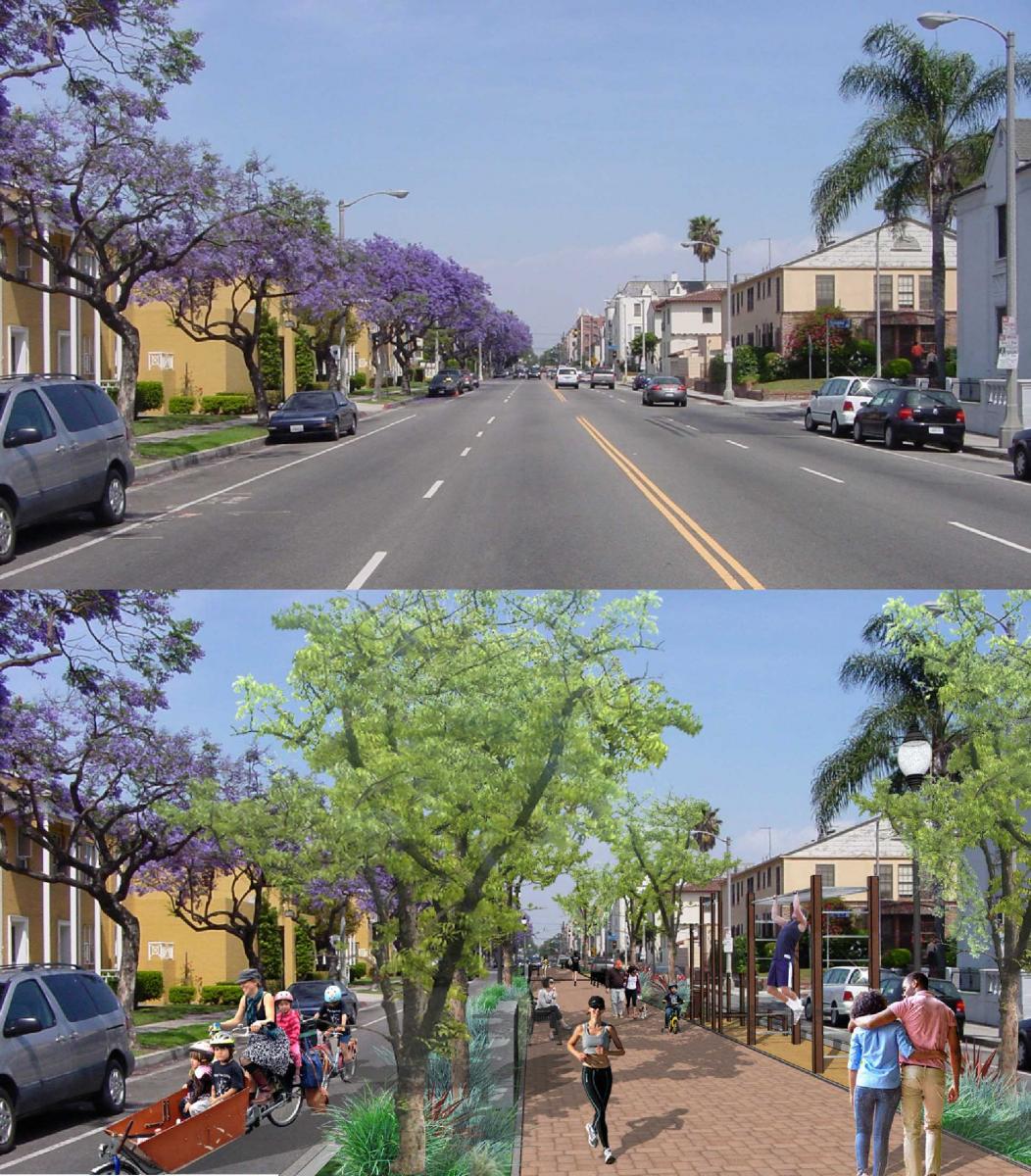
On smaller or residential streets we might be able to bring street widths down to 16-20 feet, or even as low as 8 feet where traffic is light. Many streets that have 40 feet or so of width today could see:
- Wider sidewalks
- More landscaping
- Larger front yards
- Neighborhood gardens
- Outdoor picnicking
- Jogging paths
- Children’s play yards
- Street furniture
- Other
With all of this re-purposed land, we can create more social space, which is badly missing in many communities.
Infrastructure
Well-maintained streets will be the most important infrastructure needed for AVs. Smooth pavement, well-marked lane lines, well-maintained signs and well-defined curbs provide easy readability for AVs. Funding needs will likely shift from new transportation infrastructure to maintenance.
Second, while AVs under development today are trained to operate in existing streets, we will maximize their utility when we take full advantage of vehicle-to-infrastructure (V2I) capabilities. V2I enables vehicles to communicate with traffic signals, transmitters, and even central computers. This communication will make AV travel even safer. It opens up other opportunities as well:
- Cities might want to prioritize the movement of certain vehicles like public buses or emergency vehicles. With what I call “lane clearance” technology, we can move non-preferred get vehicles out of the lane when a bus or fire truck approaches, then allow them back in the lane when the bus or fire truck has passed. This is like having a “virtual bus lane” without needing a full-time dedicated lane. This advantage might also be given to other high-occupancy shared vehicles.
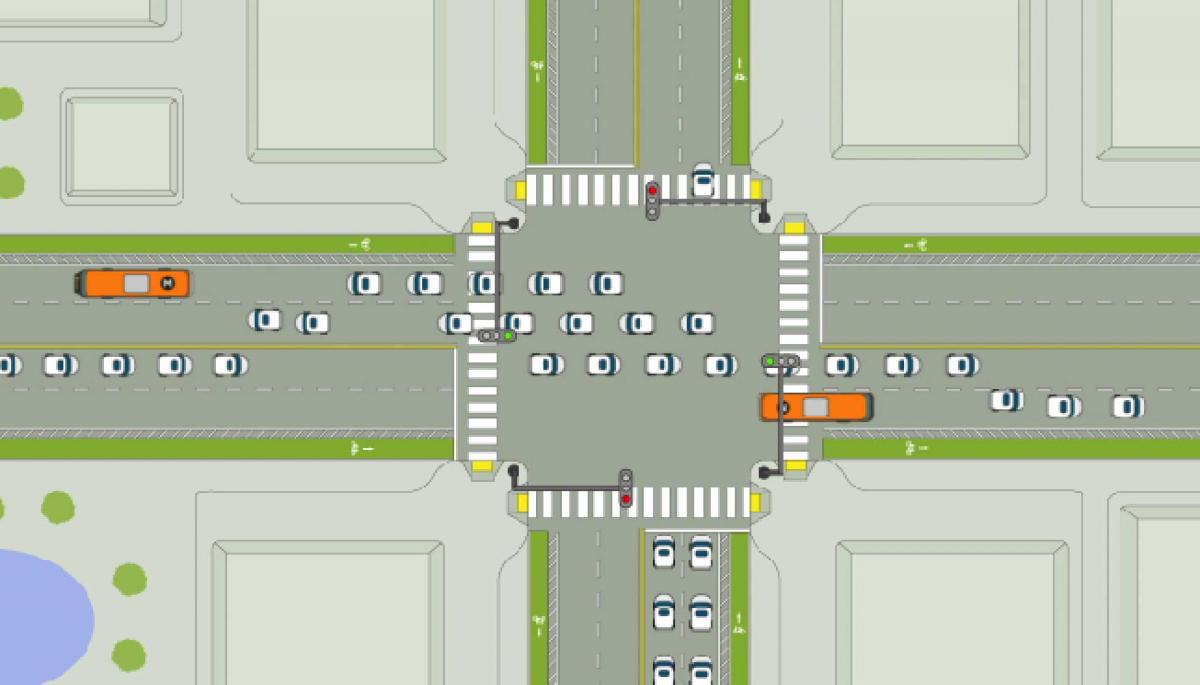
- A central computer can maximize the flow of traffic. Once we’ve given up control of the steering wheel, we might as well let the computer pick the best route.
- Computers can program streets by time of day. Perhaps a street will function as a four-lane street during peak periods, and as a two-lane street during off-peak hours. Streets can be shut down for farmer’s markets, art shows, 10k races, cyclovias or other uses as decided upon by the city or neighborhood. Some neighborhood streets may be off limits during the evenings to delivery vehicles, or low-occupancy vehicles.
- Computers can program speeds. While many people complain about cars speeding through neighborhood streets, the computer can set the speed at 15 mph, for example. Or we could allow public buses to travel at 35 mph on major streets, and limit single-occupant vehicles to 25 mph.
- In the long run as AV technology becomes more advanced, traffic signals may not be needed and intersections may function like virtual roundabouts. With other virtual infrastructure, we may not need striped lanes, or even bike lanes as the vehicles become reliably able to avoid hitting other vehicles and bicyclists. This remains to be seen and would be further in the future.
V2I needs communications technology along streets. This can be placed on lampposts, on traffic signals, or affixed to other features along the street.
Third, as many more vehicles run on electricity, we will need recharging stations. Some of these could be placed at strategic locations along our streets.
Adjacent land uses
The experience of using our streets depends much on adjacent land uses. As many surface parking lots become unneeded, they will be replaced by other land uses. Today’s surface parking could become a large reservoir of land for affordable housing. It could become open space or park space. Many other land uses will be provide a better street experience than parking lots.
Some of the worst land uses for street experience may be significantly reduced. Many gasoline stations, auto body shops and auto repair shops will likely transform to other land uses.
As more people use TaaS, driveways may be replaced with landscaping or buildings. This will enhance the experience of pedestrians, joggers, and bicyclists as they have fewer driveways to cross.
Curb management
As significant numbers of people switch from auto ownership to TaaS, demand for pick-up and drop-off along streets will grow. Managing curb space will present new challenges for cities. This may be relatively simple in low-density neighborhoods. But, what happens when thousands of employees working in downtowns with 30-story buildings all leave work between 5 and 6 pm and all need to be picked up going different directions? Cities will need to price curb space, and prioritize curb space for buses, higher-occupancy vehicles, and for people with disabilities in these locations.
Public policy
AVs will bring enormous opportunities to alleviate many problems, and to improve our lives. They also bring enormous potential to induce travel and to exacerbate many problems. The difference will be in how we shape outcomes with public policy. The key to AVs bringing a bright future, instead of an auto-centric dystopia, rests in the degree that we encourage shared rides in TaaS vehicles and that we electrify these vehicles. Some AV enthusiasts refer to this as the “Three Revolutions – Automated, Shared, Electric.”
Designing our streets in an AV future depends heavily on these three revolutions taking place. Many of the possibilities described in this paper rely on this. Without public policy that ensures that automated vehicles are shared and electric, we will be left with auto-clogged streets that are unhealthy to be near, undesirable to travel along, and wanting for public uses. With well-conceived public policy, we can bring life, health, safety, beauty and fun to our streets.
1.Steven Shladover, Dongyan Su, and Xiao-Yun Lu, “Impacts of Cooperative Adaptive Cruise Control on Freeway Traffic Flow,” Conference Paper, Transportation Research Record Journal of the Transportation Research Board, January 2012.
2.Don Shoup, The High Cost of Free Parking
3.James Arbib and Tony Seba, “Rethinking Transportation 2020-2030,” RethinkX, 2017.





